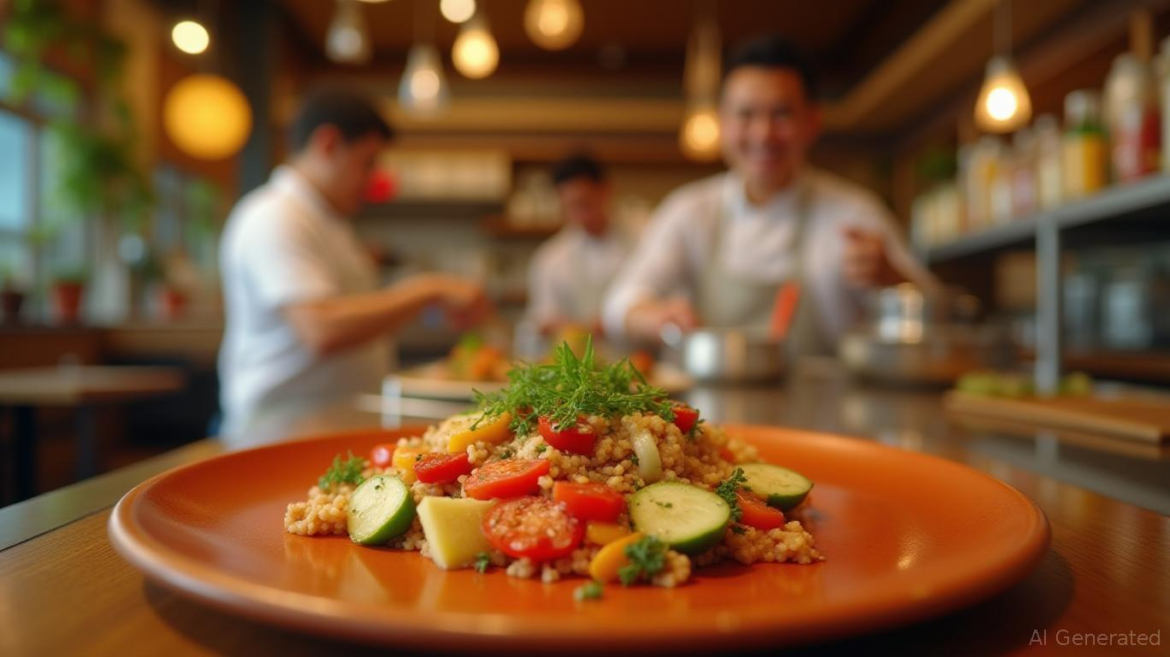The CAVA Group (NYSE: CAVA) has emerged as one of the fastest-growing players in the fast-casual dining sector, with its stock surging 7.43% in June 2025 amid robust financial performance and strategic execution. The company’s ability to capitalize on trends in health-conscious eating, ethnic diversity, and operational scalability has positioned it as a disruptor in a crowded market. But can its recent momentum translate into long-term dominance?

The Catalysts Behind CAVA’s Stock Surge
CAVA’s first-quarter results for 2025 revealed a company in expansion mode. Revenue jumped 28.2% year-over-year to $328.5 million, driven by a 10.8% increase in same-restaurant sales and 15 new store openings. The company now operates 382 locations across 26 U.S. states, with plans to add 64–68 more by year-end. This geographic expansion, paired with a focus on menu innovation—such as its grilled steak offering—has fueled customer loyalty. Digital orders now account for 38% of revenue, underscoring its omnichannel strategy.
Investors are also betting on CAVA’s category leadership. The Mediterranean cuisine segment is projected to grow rapidly, and CAVA’s CEO has explicitly positioned the brand as the “next large-scale cultural cuisine category.” With a trailing twelve-month revenue milestone of $1 billion, CAVA is no longer a niche player but a force in the $800 billion U.S. restaurant industry.
The Strategic Playbook: Expansion, Efficiency, and Innovation
Aggressive but Disciplined Growth
CAVA’s expansion is not haphazard. The company prioritizes markets with high density potential, such as Detroit, where it recently entered, and focuses on hybrid kitchens that blend dine-in and delivery capabilities. This model allows it to serve both casual diners and on-demand customers efficiently.
Operational Resilience Amid Inflation
While same-store sales growth of 10.8% outperformed peers, CAVA’s margins faced headwinds. Restaurant-level margins dipped to 25.1% due to higher wage costs and menu innovation expenses. Yet, management has mitigated these pressures through labor productivity tools—like its Kitchen Display System—and disciplined pricing.
Menu Engineering as a Growth Lever
The grilled steak introduction in 2024 demonstrated CAVA’s ability to drive premium pricing without alienating its broad customer base. The item’s 8.5% average order contribution highlights how incremental innovations can boost margins without sacrificing traffic.
Market Positioning: A Differentiated Brand in a Crowded Space
CAVA’s success hinges on its identity as a “category-defining” brand. Unlike competitors such as Sweetgreen (SG) or Chipotle (CMG), which focus on specific cuisines or dietary trends, CAVA’s Mediterranean menu—emphasizing freshness, customization, and cultural authenticity—appeals to a wide demographic.
The company’s hybrid model also differentiates it operationally. By combining in-store dining with centralized delivery kitchens, CAVA avoids the trade-off between convenience and quality, a challenge for many fast-casual chains. This flexibility has become critical as consumers increasingly demand both options.
Risks on the Horizon
While CAVA’s trajectory is compelling, risks linger. Its free cash flow dipped to $2.7 million in Q1—down from $4.7 million a year earlier—due to higher capital expenditures. This could strain liquidity if expansion accelerates further. Additionally, reliance on third-party delivery partners (e.g., Uber Eats) exposes CAVA to margin erosion as delivery fees rise.
Geographic diversification also poses challenges. New markets like Indiana or Detroit may require time to achieve the same unit economics as mature locations. Finally, commodity price volatility and labor shortages—already cited as risks—could test CAVA’s cost management prowess.
Investment Thesis: Growth at a Premium
CAVA trades at a forward price-to-sales ratio of 6.57, well above the fast-casual sector average. This premium reflects investor confidence in its long-term potential, but it also raises questions about valuation.
For growth investors, CAVA’s stock offers a compelling story: a brand capitalizing on secular trends with scalable unit economics ($2.9 million average annual revenue per store). However, value investors may balk at the premium, especially given its still-negative net income margins (7.7% in Q1).
The Bottom Line
CAVA Group’s surge reflects a blend of execution, market timing, and investor optimism. Its Mediterranean-focused strategy, hybrid operational model, and disciplined growth have created a defensible niche. Yet, sustaining this momentum will require navigating margin pressures, optimizing capital allocation, and maintaining its cultural relevance.
For now, CAVA remains a buy for investors willing to pay a premium for growth, but caution is warranted as the company scales. As the fast-casual sector matures, differentiation—and the ability to execute at scale—will be the ultimate arbiters of success.
Andrew Ross Sorkin is a pseudonym used for this analysis. The views expressed are based on publicly available information and do not constitute financial advice.

